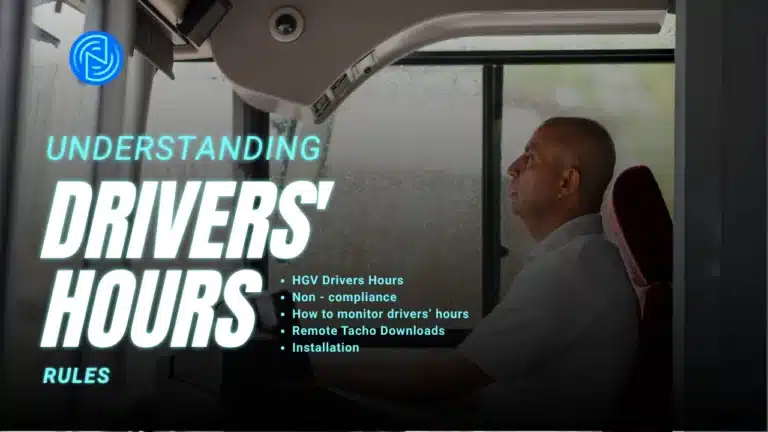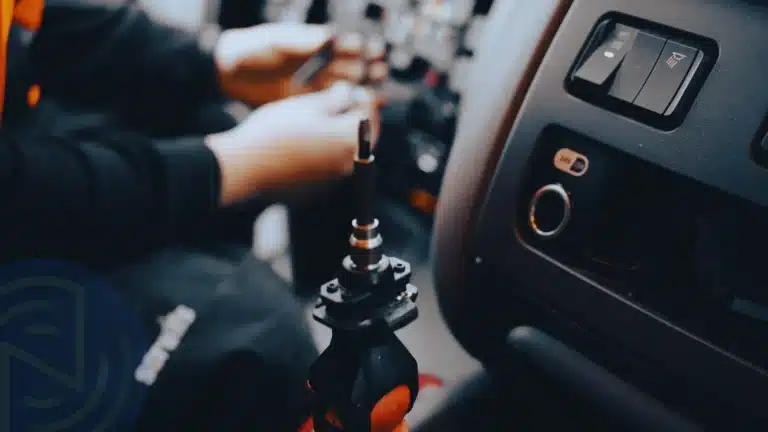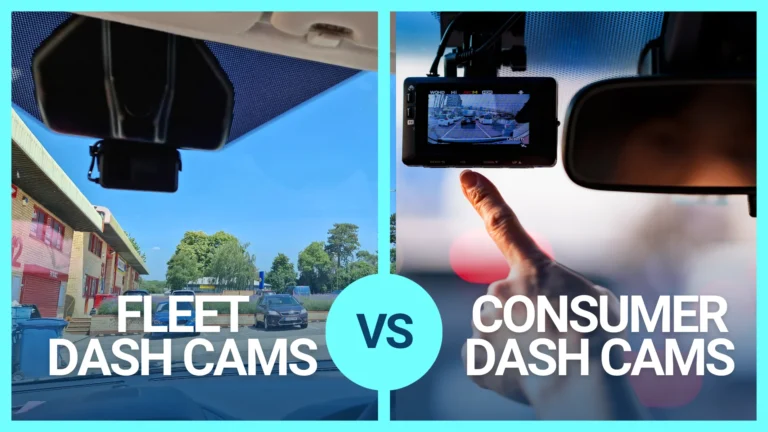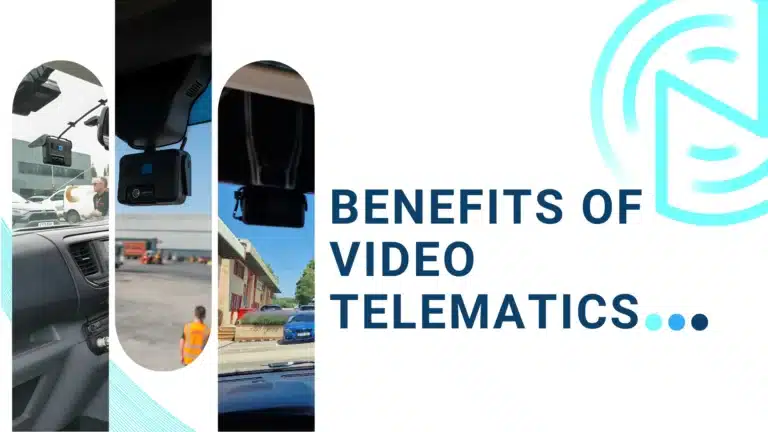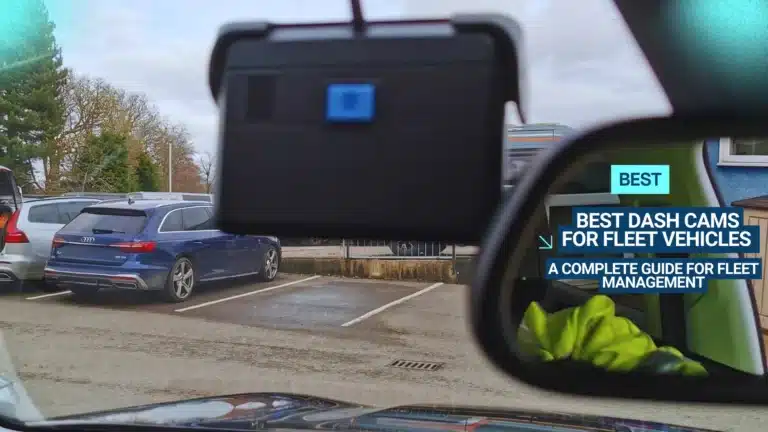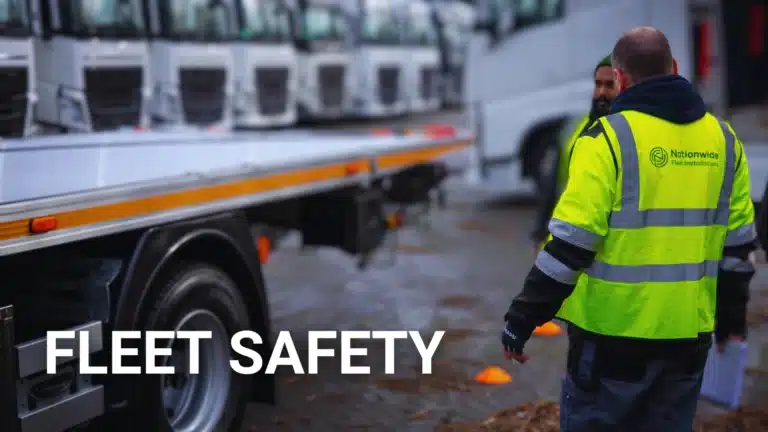Commercial Vehicle Charging Cradles & Mounts: An Overlooked Fleet Safety Addition
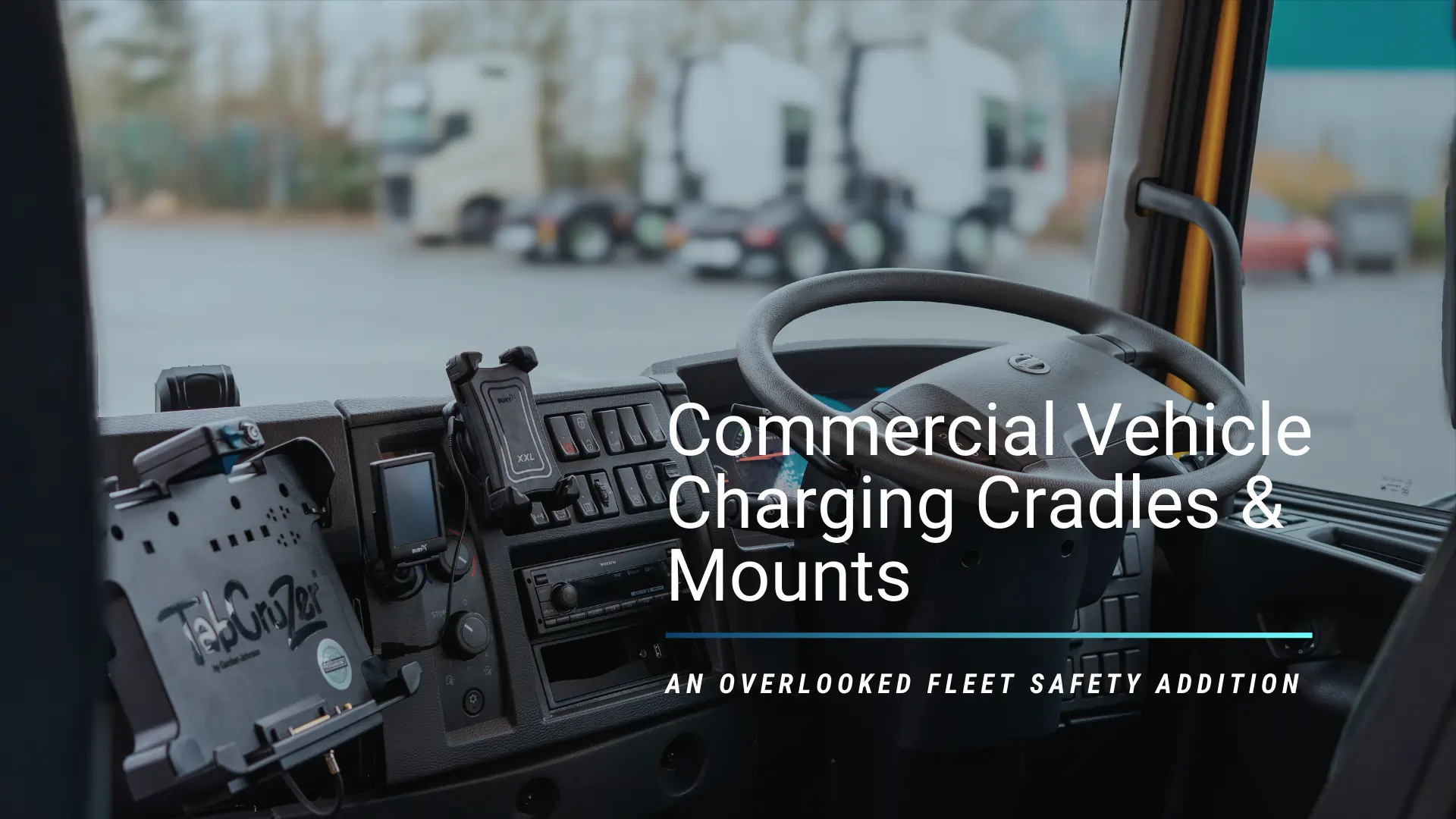
When people think about fleet safety, charging cradles and mounting solutions often don’t make the list. Usually camera technology, telematics, AI and sensors are the top solutions, but we think in-vehicle charging solutions should be part of that list.
Why Are They Important?
Charging cradles correctly held in situ by secure mounts are a vital part of a safe and functional cab environment, particularly when modern vehicles rely on a wide range of in-vehicle technology. From mobile phones, rugged tablets, mobile data terminals and job management devices, charging cradles keep them in place and functional.
Flying Objects
Loose items in the cab can become dangerous projectiles. In the event of emergency braking or a collision, unsecured devices such as tablets or phones can fly forward at speed, risking injury to the driver or passenger.
For larger vehicles like HGVs and concrete mixers, the risk doesn’t stop just because the vehicle is stationary. These vehicles undergo regular servicing, and as a result, when the cab is tilted during these procedures, any loose items can fall and damage critical systems, such as infotainment screens, dashboard buttons, or the windscreen. What should be a straightforward service job can suddenly turn into an expensive repair, with unexpected downtime.
Driving with Electronic Devices

Using an electronic device while driving is classed as a dangerous driving event. The law is clear: drivers caught holding a phone behind the wheel, even if they’re not actively using it, can face six penalty points and a £200 fine. Since 2025, the government has taken a stricter enforcement approach. What used to be a warning, awareness course, or telling-off is now more likely to result in prosecution.
That’s why cradles are not just practical, they’re essential. They help ensure drivers aren’t tempted to hold their phone or tablet, supporting safer habits, especially now that even just holding your device is considered an office.
Preventing Driver Distraction
Distracted driving is a leading cause of accidents in the fleet sector. Studies show more than two-thirds of fleet accidents linked to distraction are caused by mobile phone use. While many fleets now use driver behaviour monitoring systems, including in-cab AI cameras and telematics alerts, these systems are often reactive, highlighting poor habits after they’ve already happened.
Mobile phone policies and driver handbooks help promote these positive behaviours and can also go a long way. A more proactive approach is to remove the temptation altogether. If drivers don’t have a secure way to use their devices for tasks like navigation, job updates or route planning, they may feel forced to use them unsafely. Providing professional-grade cradles supports safer choices and helps reduce the risk of accidents linked to device use.
Built to Last
Fleet-grade mounts (securing cradles to the vehicle) are made with durability in mind. They’re designed to last the lifetime of a commercial vehicle, and it’s not uncommon to see vehicles sold second-hand with the original mounts still intact and fully functional.
This isn’t just about appearance — it’s about safety. Cheap or worn-out mounting solutions can fail at critical moments, sending devices flying or breaking apart. And if the damage isn’t immediately visible or urgent, drivers may delay reporting it. That delay can leave others exposed to risk.
Fleet-grade mounts are designed for commercial use, built to withstand vibration, regular entry and exit, and everyday wear and tear. They’re made to last the lifetime of a commercial vehicle. On the other hand, cheaper alternatives can break easily or come loose. When that happens, drivers might not report it right away, especially if it doesn’t seem dangerous at first glance. However, a loose mount or damaged cradle can quickly become a safety hazard. It’s not unusual to see de-fleeted vehicles still fitted with solid, reliable mounts ready for the next owner.
Keep Devices Charged
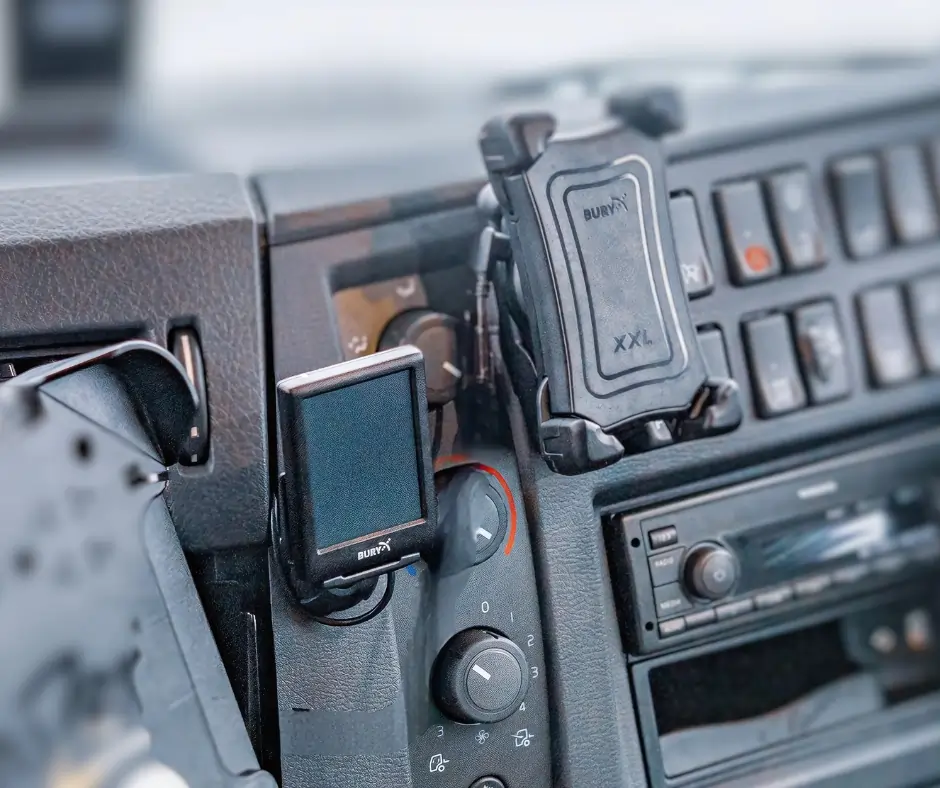
Your business relies on systems that use devices and power to run. Your drivers rely on their devices to get the job done, whether it’s communicating with the office, completing forms, tracking jobs, or navigating to the next stop. If the battery dies halfway through the day, productivity drops, and frustration rises.
Charging docks and cradles prevent issues with keeping devices charged. They ensure devices are powered and ready to use all day while cutting down on cable clutter in the cab. This also lowers the risk of drivers using poor-quality cables that can damage cigarette lighters. It also reduces the temptation for drivers to jiggle the charger while driving. Docks are easy to use and make it simple to place the device. This small upgrade provides a lot of value every day.
Easy Access, Less Risk
Field service workers and fleet drivers are often dealing with fast-paced schedules. If they need to reach for a device while driving, that moment of distraction can lead to an incident. With the right cradles in place, devices are positioned within easy reach, without taking hands off the wheel or eyes off the road.
Professional Installation Makes the Difference
You’ve invested in your fleet and it makes sense to invest in proper installation, too. A poor or inconsistent install can compromise safety. For large fleets especially, consistency matters. One vehicle installed differently to the next increases the risk of damage, confusion, or unsafe usage.
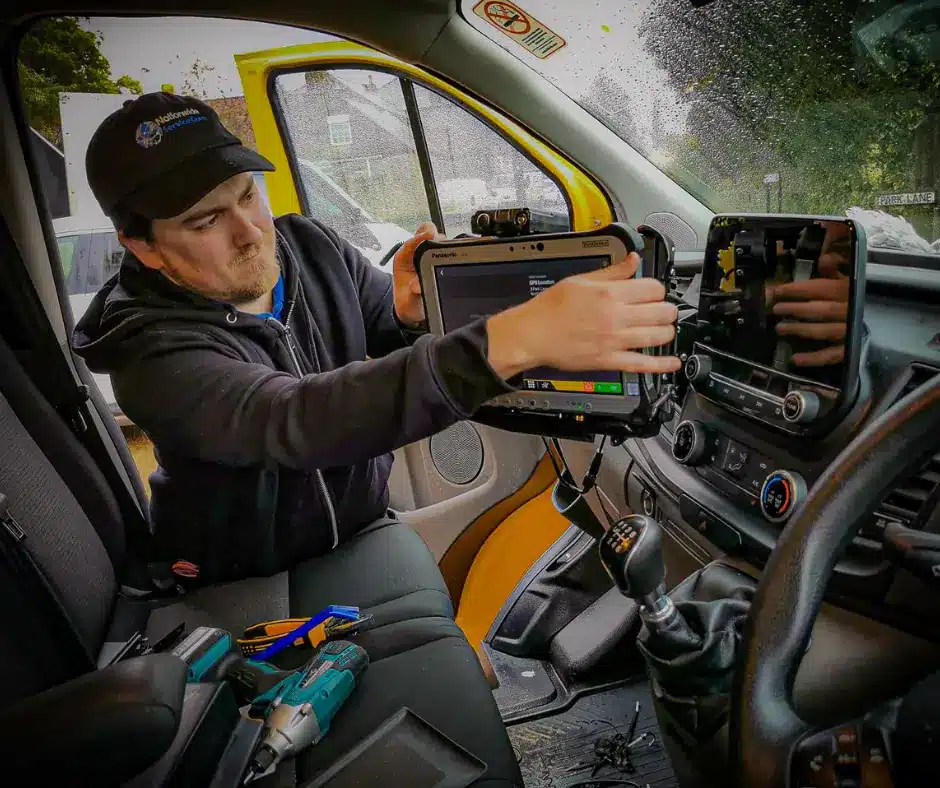
A professional fleet installer will start with a trial installation on a single vehicle, giving you a clear view of the finished result before rolling it out across the rest of the fleet. This ensures every cab setup is safe, tidy and uniform.
Why Professional Installation Matters for Cable Management
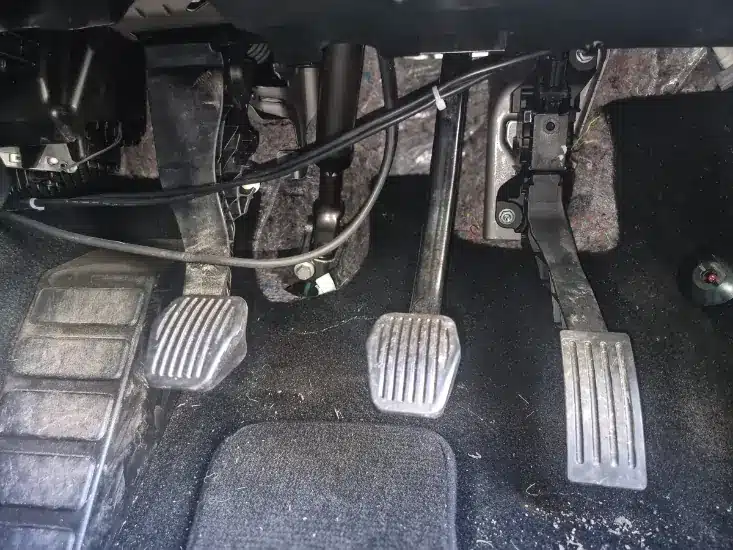
When fitting technology like this into vehicles, proper cable management is crucial. A professional installer ensures that all wiring is neatly secured, with no loose or exposed cables. This not only keeps the cab tidy but also prevents cables from becoming a hazard, for example, getting caught on pedals or interfering with driver movement. Poor cable routing can be dangerous and lead to avoidable issues over time.
Correct Positioning Is Essential
Where a device is mounted inside the vehicle matters just as much as how it’s installed. Installers will position devices so they are clearly visible to the driver without being a distraction or blocking their view of the road. They’ll also make sure mounts don’t cover important instruments, screens, switches, or safety features.
Incorrect placement could even cause a vehicle to fail its MOT, leading to unplanned downtime and costs to rectify the issue. With a professional install, you avoid those risks and keep your vehicles compliant, safe, and on the road.
Conclusion
Cradles and mounts might not be the most exciting part of your fleet spec, but they play a key role in keeping your drivers safe, your tech working, and your investment protected. If you’re reviewing your in-vehicle equipment, don’t overlook this simple yet essential upgrade.
Need advice or support with fleet-grade mounts and in-vehicle installations? We’re here to help.

